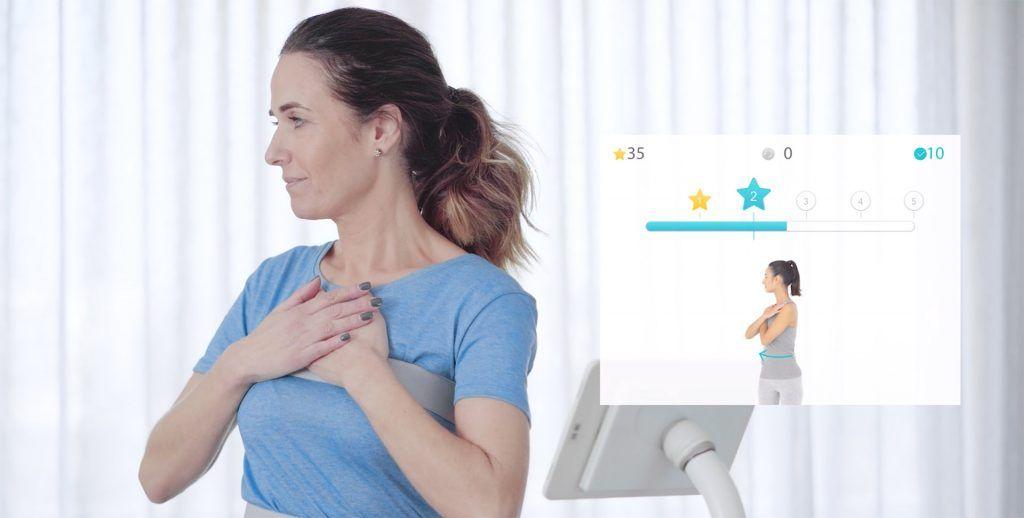Why human physical therapists should not fear their digital counterparts

The nationwide shortage of physical therapists (PTs), especially as PTs will eventually start to retire, is the focal point of the latest projection by the American Physical Therapy Association. If we factor in the impact of shifting demographics and an aging population, this gap between supply and demand becomes evident.
As a result, physical therapy becomes a scarce resource, increasingly costly and out of reach for most people. The solution? Some would be very quick to say “train more PTs, increase supply,” but the answer might go beyond the obvious: let’s make PTs superhuman.
Giving superhuman abilities to physical therapists
Science fiction has been telling us stories of robot-ruled worlds for a while now. However, having robots replacing humans, especially in healthcare, is nothing but a scaremongering tale that does little for innovation and stepping towards a brighter future. Instead, we must develop and explore technologies like Artificial Intelligence (AI) as a tool to augment the capabilities of practitioners, to make them better at their jobs. In physical therapy, AI has the potential to improve the decision-making process by providing superhuman level diagnostics and measurement. For instance, collecting data with motion trackers offers physical therapists a rich source of information that enables them to accurately identify and modify a patient’s progress.
Nevertheless, as our CEO put it, “while [AI is] great for analysis and research, healthcare still needs a human touch.” This approach calls for collaboration between machine and human rather than choosing between one or the other. “It’s overly simplistic to see AI technologies and human medical professionals as opposed to each other in a battle over jobs. What matters most is patient outcomes, and a combination of strong AI-led analysis with a human context has the potential to deliver massive improvements.”
Another way AI is giving super abilities to healthcare providers is through scalability. As Vinod Khosla, founder of Khosla Ventures, put it, “There are probably a million doctors in the United States, give or take, but with AI systems, we could create ten or a few hundred million doctors worth of expertise and use human doctors only for what they love to do, which is interfacing with patients, making health more personal, accessible, convenient, and less costly.” At the end of the day, “AI will do much better diagnosis, monitoring, and follow-up than most human doctors and complement the human element of care humans might provide”.
The Digital Therapist as an ally for better care
SWORD knows AI is bound to make the lives of people struggling with MSK pain easier; the fact that it makes the physical therapists’ jobs more scalable is a welcome plus. Besides prescribing therapeutic programs, the work of physical therapists includes assessing movement patterns and monitoring the progress of a patient. The SWORD Digital Therapist performs these tasks and provides more accurate data to SWORD’s clinical team, who no longer has to measure off how high should the participant lift their arm or exactly how many degrees is their left knee’s range of motion.
In the end, the human PT receives unique, precise information to create a more personalized program, and this saves them precious hours in their busy schedule. By being able to distribute their time more efficiently, PTs can assist more people without compromising treatment quality.
Moreover, the Digital Therapist is capable of providing instant feedback on participant performance during a session, which not only maximizes results but also fosters the PT’s availability to delve into continuous education. As Lauran also said, “trying to fix people isn’t the only thing that’s needed, you have to try to get them to change and modify their behavior so they can achieve a lifetime of function and not just a period of function.”
Human+digital physical therapy provides better results
There’s one more reason why human physical therapists should not fear their digital counterparts apart: they can make their practice more effective.
Our combined human+machine MSK care solution has been clinically validated by several studies so far. In our first study, a group of participants under the SWORD program improved twice as much as the control group following a conventional PT treatment, not only on the objective measurement of their recovery but also on their perceived quality of life. The follow-up study then showed that these results were maintained for months without additional treatment, proving that the Digital Therapist can also provide long-term benefits.
And as we continue our scientific research and validation, the testimonials from our participants and physical therapists will keep corroborating the positive impact of Sword on their lives.

